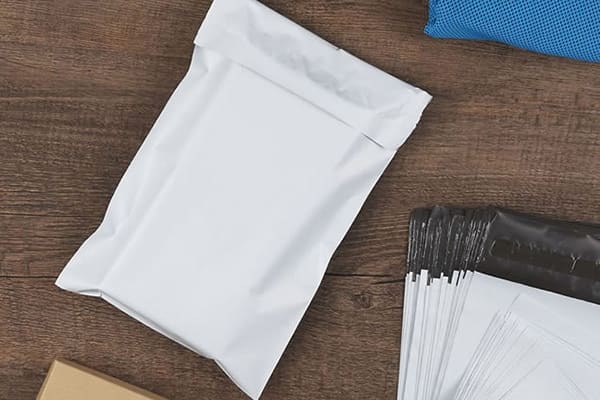In the rapidly evolving world of e-commerce and logistics, the role of packaging has become increasingly significant. Among the various types of packaging materials available, plastic envelope packaging has emerged as a popular choice for businesses and consumers alike. Known for its lightweight, durable, and versatile characteristics, plastic envelope packaging plays a critical role in ensuring that products are delivered safely and efficiently.
The Basics of Plastic Envelope Packaging
Plastic envelope packaging, often referred to as poly mailers or poly bags, is a type of lightweight, flexible packaging material primarily used for shipping non-fragile items. Unlike traditional cardboard boxes, plastic envelopes are made from polyethylene, a type of plastic known for its strength and durability. These envelopes are commonly used to ship clothing, documents, and other soft goods that do not require rigid protection.
Plastic envelope packaging is available in various sizes, thicknesses, and designs, catering to a wide range of shipping needs. They are typically equipped with self-sealing adhesive strips, making them easy to close securely. Some versions may also include bubble padding or other protective features to enhance the safety of the contents during transit.
Advantages of Plastic Envelope Packaging
The popularity of plastic envelope packaging can be attributed to several key advantages that make it an attractive option for businesses and consumers:
1. Lightweight and Cost-Effective: One of the most significant benefits of plastic envelope packaging is its lightweight nature. This characteristic not only reduces shipping costs but also contributes to lower fuel consumption during transportation, making it a more environmentally friendly option compared to heavier packaging materials. For businesses, the cost savings associated with using plastic envelopes can be substantial, especially when shipping large volumes of products.
2. Durability and Protection: Despite being lightweight, plastic envelope packaging is highly durable and resistant to tearing, moisture, and punctures. This level of protection ensures that the contents remain intact and undamaged throughout the shipping process. For items like clothing or documents that do not require rigid packaging, plastic envelopes provide adequate protection while minimizing the risk of damage.
3. Versatility and Customization: Plastic envelopes are versatile and can be customized to meet specific branding and marketing needs. Businesses can print logos, promotional messages, or other designs directly onto the envelopes, turning them into a branding tool. Additionally, the availability of various sizes and thicknesses allows for the packaging of a wide range of products, making plastic envelopes a flexible option for different shipping requirements.
4. Space-Saving Design: Plastic envelope packaging is designed to be compact, taking up minimal space during storage and shipping. This feature is particularly advantageous for businesses with limited storage space or those looking to maximize their shipping efficiency. The compact design also allows for easier handling and processing, streamlining the logistics process.
Environmental Considerations
While plastic envelope packaging offers numerous advantages, it also raises environmental concerns, particularly regarding plastic waste. Polyethylene, the primary material used in plastic envelopes, is derived from non-renewable fossil fuels and can contribute to environmental pollution if not properly managed.
Recycling plastic envelopes is possible, but the process can be challenging due to the varying types of plastic used and the presence of adhesive strips or other non-recyclable components. As a result, many plastic envelopes end up in landfills, where they can take hundreds of years to decompose.
To address these concerns, some companies are exploring alternative materials for envelope packaging, such as biodegradable or compostable plastics. These materials aim to reduce the environmental impact of plastic packaging by breaking down more quickly and safely in the environment. However, the adoption of these alternatives is still in its early stages, and widespread use will require significant changes in manufacturing and disposal practices.
The Future of Plastic Envelope Packaging
The future of plastic envelope packaging lies in balancing the benefits of lightweight, durable packaging with the need for environmental sustainability. As consumer awareness of environmental issues grows, there is increasing pressure on businesses to adopt more eco-friendly packaging solutions.
Innovations in material science, such as the development of biodegradable plastics or fully recyclable plastic envelopes, are likely to play a key role in shaping the future of this industry. Additionally, efforts to improve recycling infrastructure and educate consumers on proper disposal methods will be crucial in mitigating the environmental impact of plastic envelope packaging.
Conclusion
Plastic envelope packaging has become an essential tool in the modern logistics and e-commerce sectors, offering a cost-effective, durable, and versatile solution for shipping a wide range of products. However, the environmental challenges associated with plastic packaging cannot be ignored. As the industry evolves, the development and adoption of more sustainable materials and practices will be critical in ensuring that plastic envelope packaging remains a viable option for businesses while minimizing its impact on the planet.
Post time: 08-16-2024


